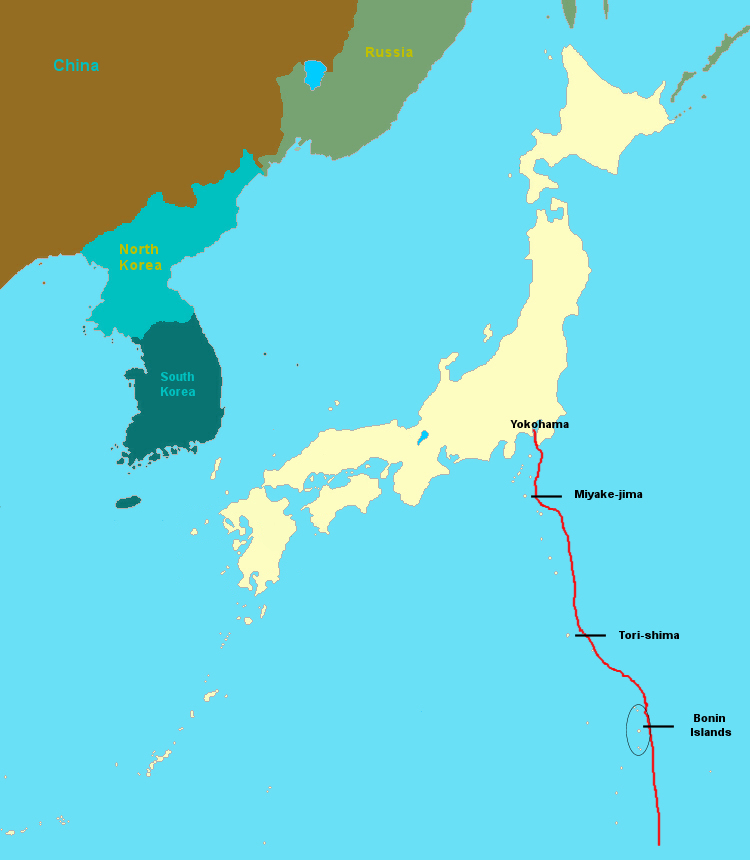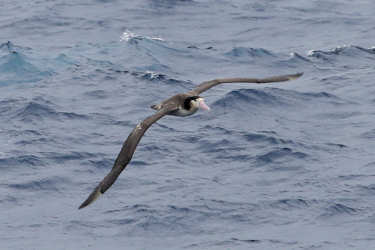Japan

Historie
Land bridges have periodically linked the Japanese archipelago to the Asian continent at Korea in the southwest and
Sakhalin in the north. The earliest firm evidence of human habitation is of early Upper Paleolithic hunter-gatherers from
40.000 years ago, when Japan was separated from the continent.
The Jomon period spans from about 12.000 BC to about 800 BC. Japan was inhabited by a hunter-gatherer culture that reached a
considerable degree of sedentism and cultural complexity.
Though hunting and foraging continued, the Yayoi period (800 BC - 250 AD) brought a new reliance on agriculture. Bronze and iron
weapons and tools were imported from China and Korea; such tools were later also produced in Japan. The Yayoi period also saw the
introduction of weaving and silk production, glassmaking and new techniques of woodworking.
During the subsequent Kofun period, (250 AD - 538 AD) most of Japan gradually unified under a single kingdom. The center of
the unified state was Yamato. The rulers of the Yamato state were a hereditary line of emperors who still reign as the world's
longest dynasty.
The Asuka period (538 - 710) began with the introduction of the Buddhist religion from the Korean kingdom of Baekje. Since then,
Buddhism has coexisted with Japan's native Shinto religion.
In 710 the government constructed a grandiose new capital at Heijo-kyo. The first two books produced in Japan appeared during
this Nara period (710 - 794), the Kojiki and Nihon Shoki, which chronicle legendary accounts of early Japan and
relate creation myths that assert the imperial family descends directly from the gods. The latter half of the eighth century also saw
the compilation of the Man'yoshu, widely considered the finest collection of Japanese poetry.
In 784, the capital moved briefly to Nagaoka-kyo, then again in 794 to Heian-kyo (modern Kyoto), which remained the capital
until 1868.
Throughout the Heian period (794 - 1185) the power of the imperial court declined. The court became so self-absorbed with power
struggles and with the artistic pursuits of court nobles that it neglected the administration of government outside the capital.
By the eleventh century more land in Japan was controlled by shoen owners than by the central government. Two powerful noble families
that had descended from branches of the imperial family, the Taira and Minamoto clans, acquired large Samurai
armies and many shoen outside the capital.
In 1156 a dispute over succession to the throne erupted and the two rival claimants hired the Taira and Minamoto clans respectively in
the hopes of securing the throne by military force. This conflict ended in the Genpei War (1180 - 1185), which resulted in the
fall of the Taira clan and the establishment of the Kamakura shogunate (1185 - 1333) under Minamoto Yoritomo.
Discontent among the samurai proved decisive in ending the Kamakura shogunate. In 1333 Emperor Go-Daigo launched a rebellion in the
hope of restoring full power to the imperial court. The shogunate sent General Ashikaga Takauji to quell the revolt, but
Takauji and his men instead joined forces with Go-Daigo and overthrew the Kamakura shogunate.
Takauji rebelled after Go-Daigo refused to appoint him shogun. In 1338 Takauji captured Kyoto and installed a rival member of the
imperial family on the throne, Emperor Komyo, who did appoint him shogun. Go-Daigo responded by fleeing to the southern city
of Yoshino, where he set up a rival government. This ushered in a prolonged period of conflict between the Northern Court
and the Southern Court.
During the second half of the 16th century Japan gradually reunified which led to the establishment of the Tokugawa shogunate.
(1603 - 1868)
The arrival in 1853 of a fleet of American ships commanded by Commodore Matthew C. Perry threw Japan into turmoil. The US
government aimed to end Japan's isolationist policies. The shogunate had no defense against Perry's gunboats and had to agree to his
demands that American ships be permitted to acquire provisions and trade at Japanese ports.
The shogunate's failure to oppose the Western powers angered many Japanese, particularly those of the southern domains of Choshu
and Satsuma. Many samurai there, inspired by the nationalist doctrines, adopted the slogan of sonno joi
("revere the Emperor, expel the barbarian"). The two domains went on to form an alliance and in 1868 convinced the young Emperor
Meiji and his advisors to issue a rescript calling for an end to the Tokugawa shogunate. The ensuing Boshin War
(1868 - 1869) led to the fall of the shogunate. The emperor was restored to nominal supreme power, and in 1869 the imperial family
moved to Edo, which was renamed Tokyo ("eastern capital").
Yamagata Aritomo, who was born a samurai in the Choshu domain, was a key force behind the modernization and enlargement of the
Imperial Japanese Army. The Japanese military played a key role in Japan's expansion abroad. The government believed that
Japan had to acquire its own colonies to compete with the Western colonial powers.
After consolidating its control over Hokkaido and annexing the Ryukyu Kingdom, it next turned its attention to China and Korea.
During the ensuing First Sino-Japanese War (1894 - 1895), Japan's highly motivated and well-led forces defeated the more numerous
and better-equipped military of Qing Empire of China. The island of Taiwan was thus ceded to Japan in 1895.
Japan next clashed with Russia, which was expanding its power in Asia. The Russo-Japanese War of 1904–05 ended with the dramatic
Battle of Tsushima, which was another victory for Japan's military. Japan thus laid claim to Korea as a protectorate in 1905,
followed by full annexation in 1910.
Japan's participation in World War I on the side of the Allies sparked unprecedented economic growth and earned Japan new colonies
in the South Pacific seized from Germany. After the war Japan signed the Treaty of Versailles and enjoyed good international
relations through its membership in the League of Nations and participation in international disarmament conferences.
Japan's expansionist vision grew increasingly bold. Many of Japan's political elite aspired to have Japan acquire new territory for
resource extraction and settlement of surplus population. These ambitions led to the outbreak of the Second Sino-Japanese War
in 1937.
The United States opposed Japan's invasion of China and responded with increasingly stringent economic sanctions intended to deprive
Japan of the resources to continue its war in China. Japan reacted by forging an alliance with Germany and Italy in 1940, known as the
Tripartite Pact, which worsened its relations with the US.
In late 1941 Japan's government, led by Prime Minister and General Hideki Tojo, decided to break the US-led embargo through force
of arms. On December 7, 1941, the Japanese Navy launched a surprise attack on the American fleet at Pearl Harbor, Hawaii.
Japan experienced dramatic political and social transformation under the Allied occupation in 1945–1952. US General
Douglas MacArthur, the Supreme Commander of Allied Powers, served as Japan's de facto leader and played a central role in
implementing reforms.
Shigeru Yoshida served as prime minister in 1946–47 and 1948–54, and played a key role in guiding Japan through the occupation.
His policies, known as the Yoshida Doctrine, proposed that Japan should forge a tight relationship with the United States and
focus on developing the economy rather than pursuing a proactive foreign policy.
After 1955, Japan enjoyed very high economic growth, and became a world economic powerhouse. Since the 1990s, economic stagnation has
been a major issue.
I have visit Japan in april 2015.
It was part of the West Pacific Odessey
On that trip i have seen
Bonin Islands
Tori-shima
Miyake-jima
Yokohama
Please let me know when you're having questions.
i would be pleased to help you.
Things to do and other tips
